Visual recognition Normal Worksheets for Ages 3-9
8 filtered results
-
From - To
Unlock your child's visual recognition skills with our engaging worksheets for ages 3-9! Tailored to nurture early learning, these printable activities offer delightful challenges that bolster foundational skills in pattern recognition, object identification, and hand-eye coordination. Our expertly crafted worksheets immerse young learners in fun and interactive exercises, promoting cognitive development and boosting confidence. Enjoy a variety of themes and levels, ensuring progressive learning that keeps children motivated and eager to learn. Perfect for parents and educators aiming to build strong early learning foundations. Visit Kids Academy for your free visual recognition worksheets today!
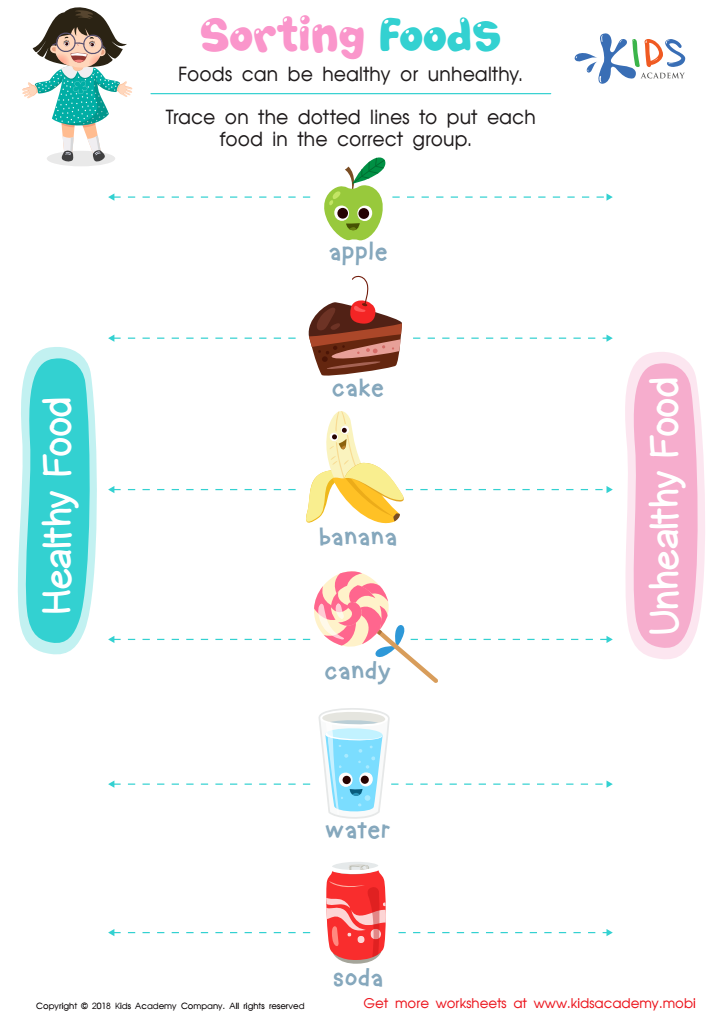

Sorting Food Worksheet
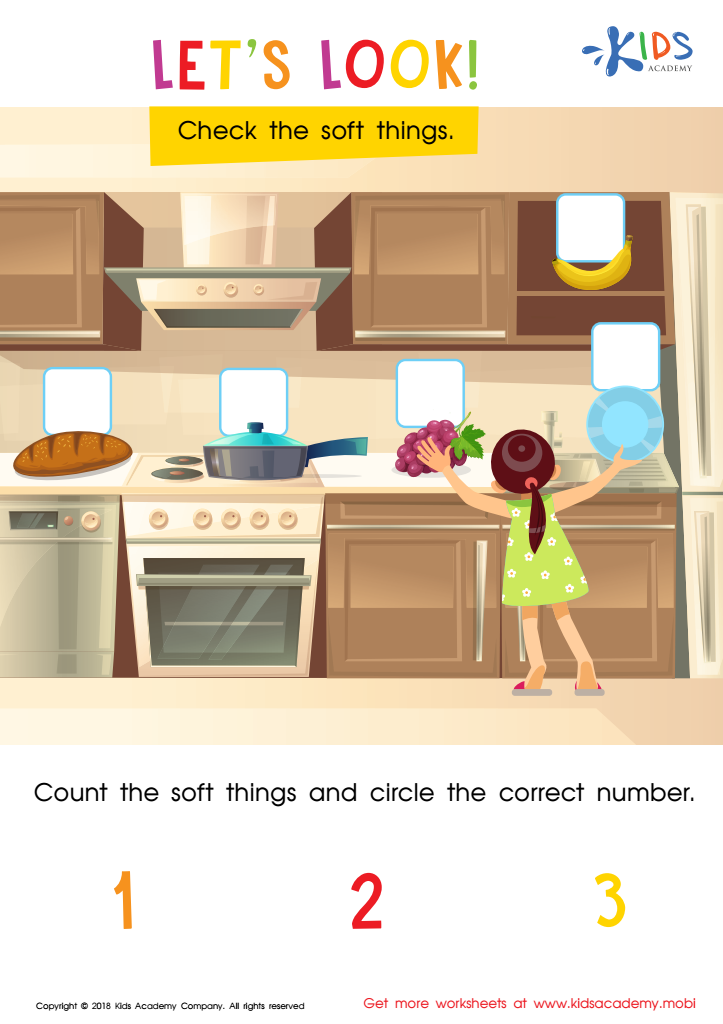

Let's Look! Assessment Worksheet
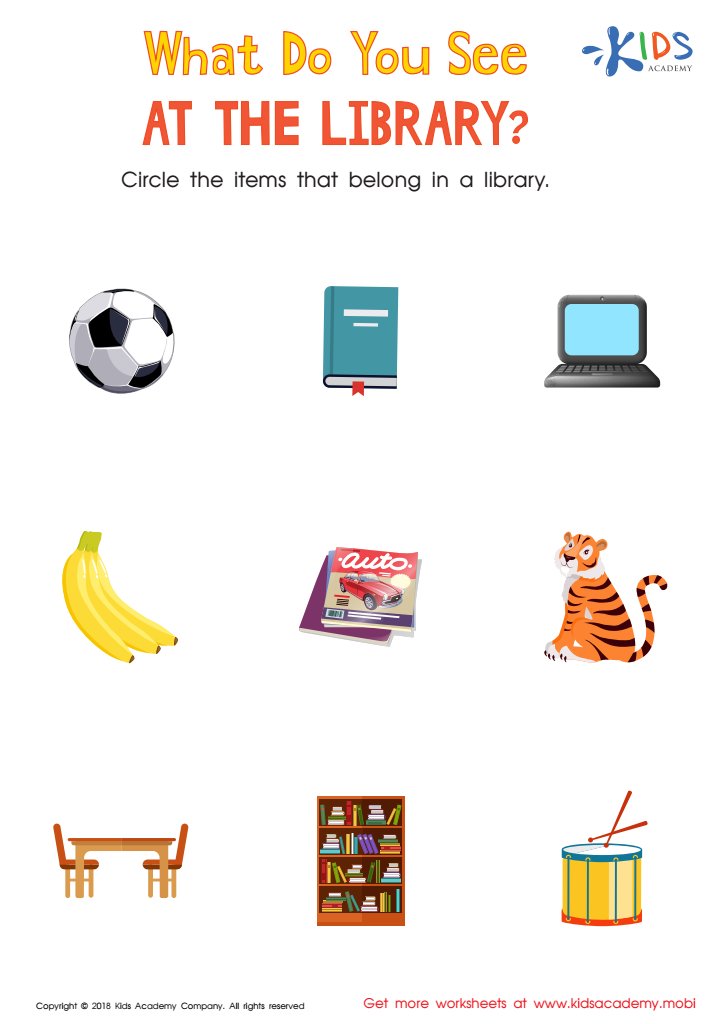

What Do you See at the Library? Worksheet
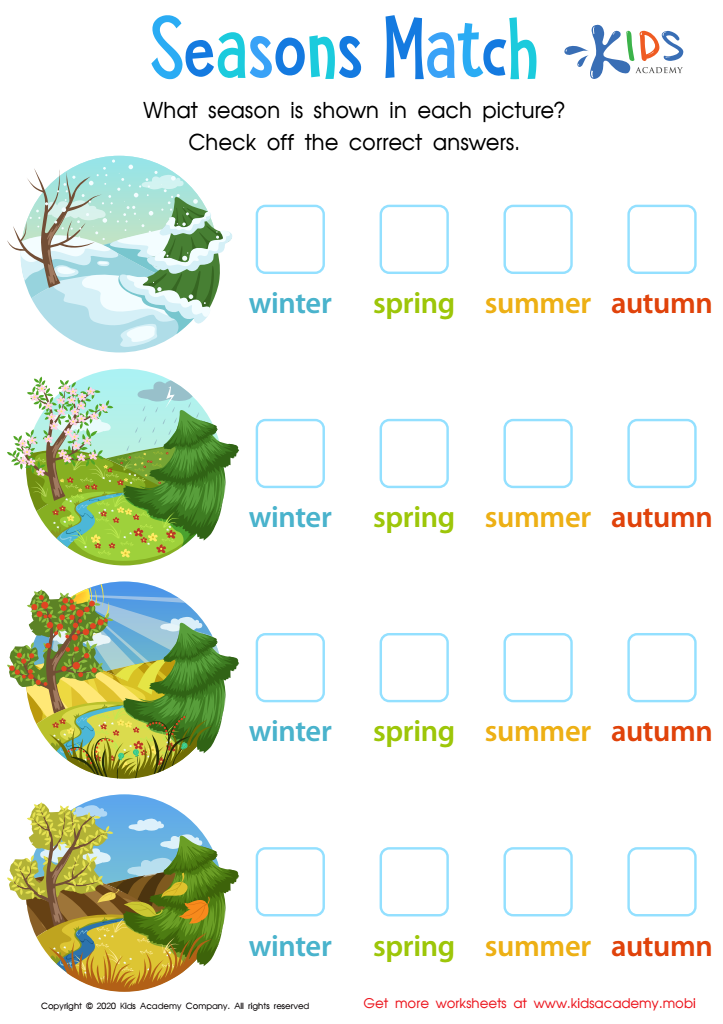

Seasons Match Worksheet


Skip Counting by 10 Through Our Community Worksheet


Match the Picture Worksheet
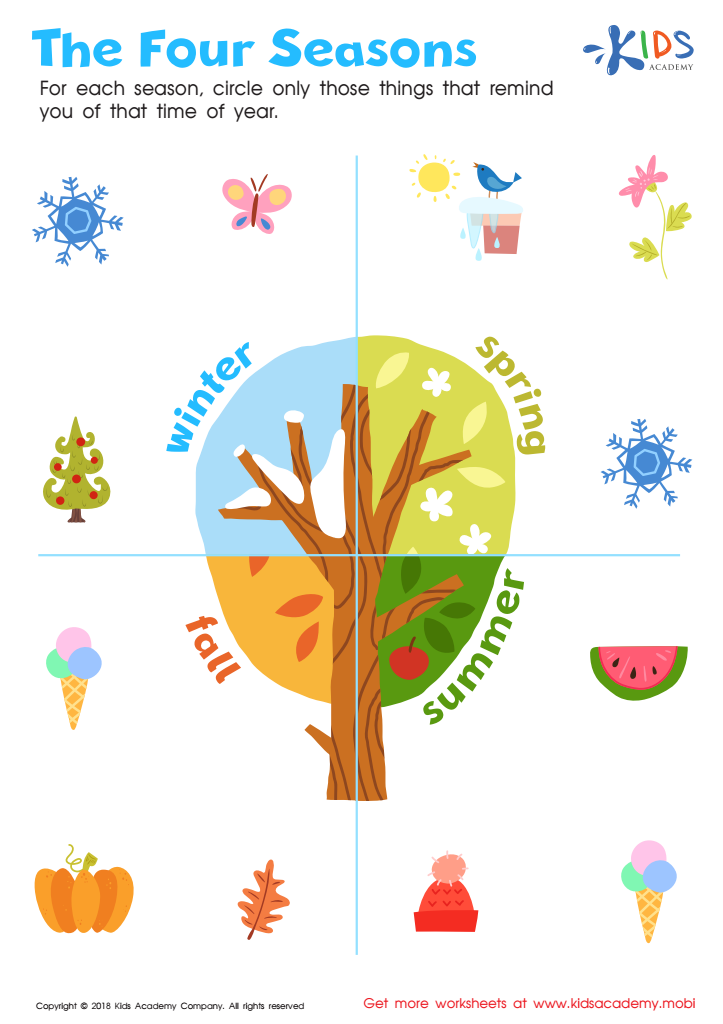

The Four Seasons Worksheet
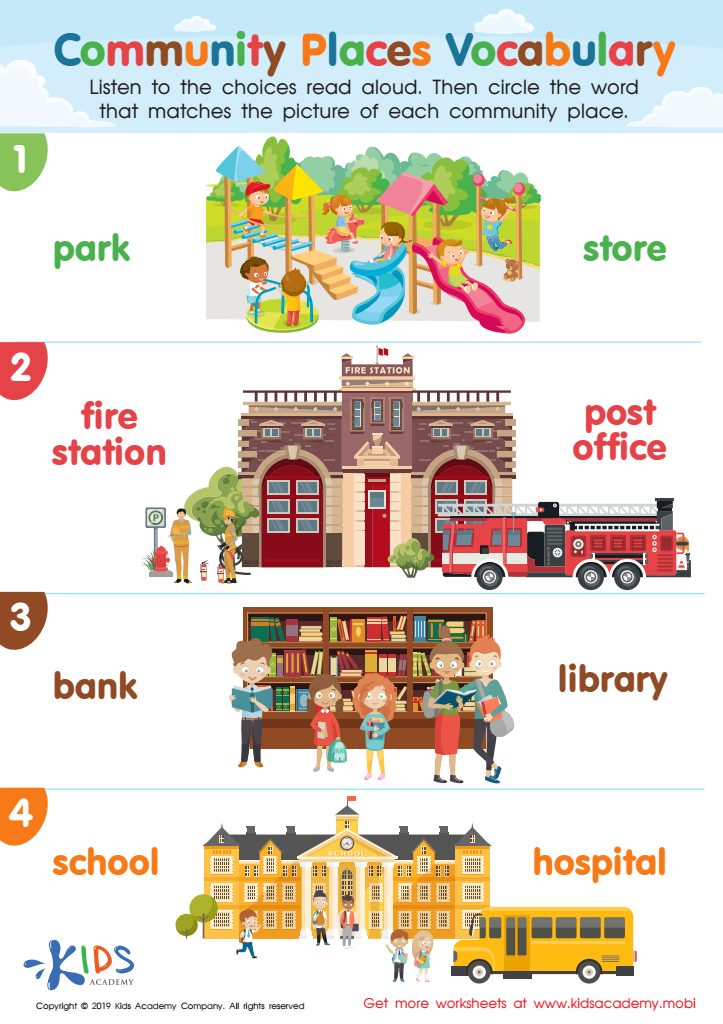

Community Places Vocabulary Worksheet
Visual recognition is crucial for children aged 3-9 because it forms the foundation for multiple learning skills. At this stage, children's brains are rapidly developing, and their ability to recognize and differentiate between shapes, colors, and patterns significantly influences their cognitive and academic growth.
Early visual recognition skills help in developing literacy. When children identify letters, numbers, and words, they are gaining the necessary pre-reading abilities that pave the way for successful reading and writing. Recognizing visual patterns also supports mathematical understanding, such as counting, sorting, and recognizing geometric shapes.
Moreover, visual recognition enhances memory and attention span. When children learn to observe details and retain visual information, they develop better concentration and memory retention capabilities. This skill also fosters problem-solving abilities, as children learn to make sense of visual data and apply it to various situations.
Social interactions also come into play. Recognizing and interpreting facial expressions and body language aids in emotional intelligence, enabling children to better understand and respond to social cues.
Therefore, parents and teachers should nurture visual recognition skills through activities like puzzles, matching games, and visual storytelling. Doing so not only contributes to educational readiness but also prepares children for a well-rounded developmental experience.
 Assign to My Students
Assign to My Students















